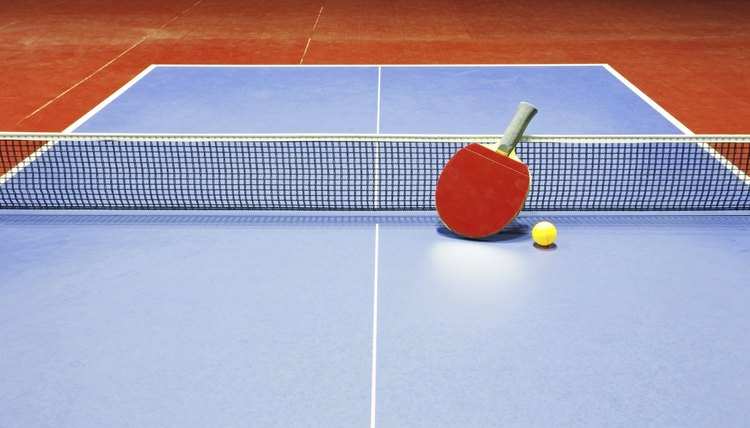Types of Table Tennis Rackets

Recreational table tennis players often do not care about the type of racket they are using in a game; they are happy as long as the racket doesn't look too worn and they can hit the ball over the net. Players looking to improve their game can choose from a variety of table tennis rackets, each of which produces different results when hitting the ball.
Early Racket Designs
Prior to the 1950s, table tennis players had two racket choices: hard rubber or sandpaper, according to USA Table Tennis. Hard rubber rackets were used by advanced table tennis players until the invention of sponge rackets. The rackets are still a good choice for beginning players who do not want to spend extra money on more advanced rackets. As the name suggests, a strip of hard rubber is placed on wide area on each side of the racket, providing a surface that increases control of the ball.
Sandpaper rackets had a strip of sandpaper on each side of the racket. A major problem of sandpaper rackets is that they damage the ball.
Sponge rackets made hard rubber and sandpaper rackets obsolete. A layer of sponge is placed underneath a layer of rubber and provides increased ball control and speed. Sponge rackets also allowed for specialty rackets, which cater to your desired style of play.
Rackets for an Attacking Game
The two most common table tennis rackets are inverted and pips-out, according to USA Table Tennis. The layer of rubber on inverted table tennis rackets has rows of small pimples, or pips. The pips face inward and create a flat surface that increases the amount of control you have on the ball. Pips-out rackets are similar to inverted rackets except the pips point outward, giving the racket a rough texture. A pips-out racket does not allow you to place as much spin on the ball, but you can hit it harder. Both types increase the racket's grip on the ball, allowing for increased spin and harder, accurate hitting. These rackets allow you to make stronger offensive shots in your attempt to win rallies.
Rackets for a Defensive Game
You may choose to use a defensive racket in a game, depending on your opponent's playing style. Defensive rackets do not allow you to place your own spin on the ball, but reverse the type of spin put on the ball by your opponent, according to USA Table Tennis. For example, if your opponent placed backspin on the ball, hitting it with a defensive racket would return the shot with topspin. The two types of defensive rackets are antispin and long pips.
Antispin rackets, according to USA Table Tennis, have a slick surface made of soft sponge. The surface makes it so you cannot create spin on the ball. You do not have many offensive options with antispin rackets and may leave yourself open to attack.
Long pips rackets have longer, thinner pips than standard pips-out rackets. The texture of the paddle changes each time you hit the ball with a long pips racket, which may lead to unexpected shots for your opponent.
Writer Bio
William Pullman is a freelance writer from New Jersey. He has written for a variety of online and offline media publications, including "The Daily Journal," "Ocular Surgery News," "Endocrine Today," radio, blogs and other various Internet platforms. Pullman holds a Master of Arts degree in Writing from Rowan University.
